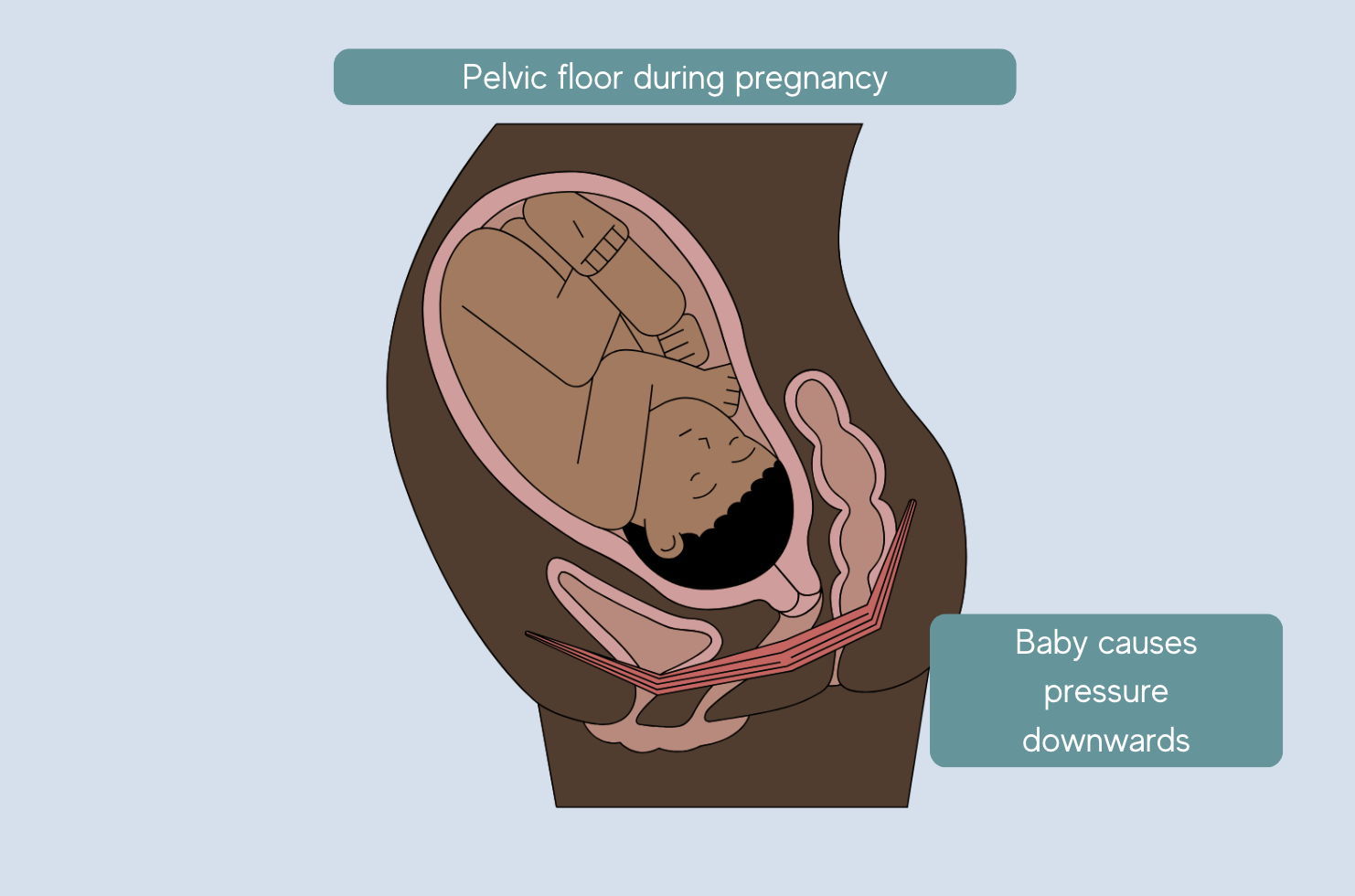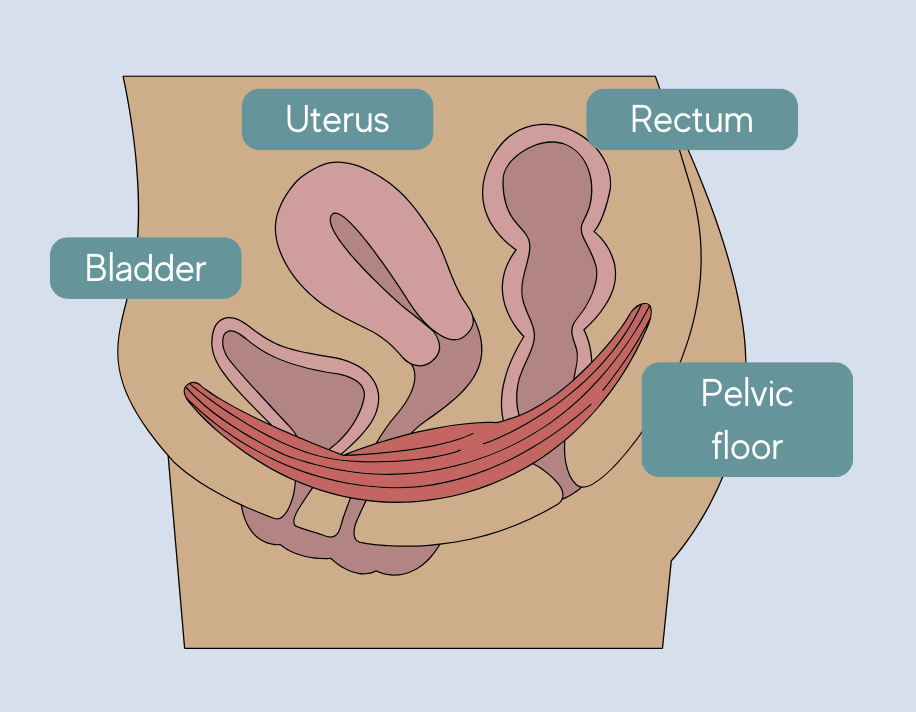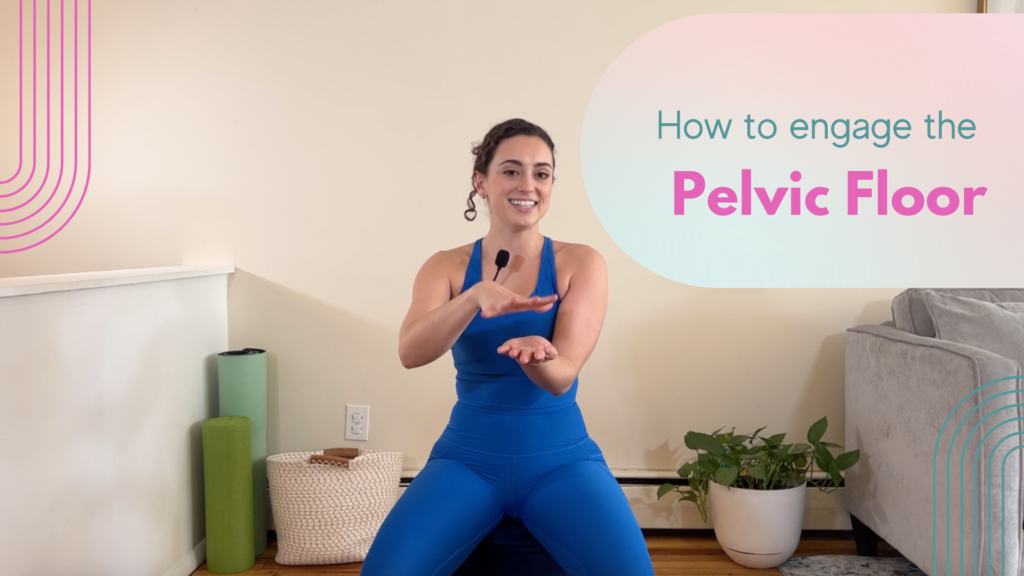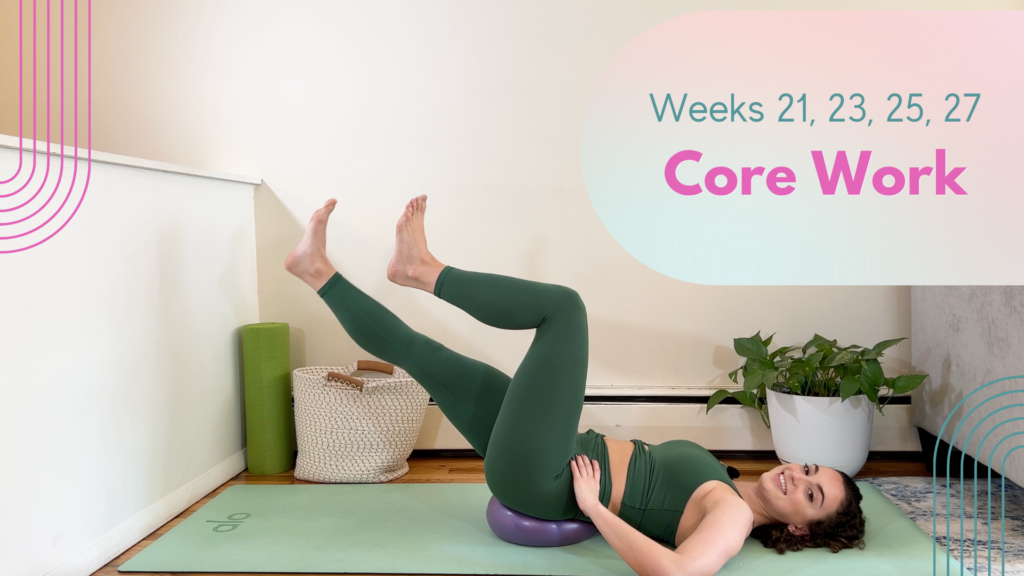The Blog
Simple steps to protect your pelvic floor during pregnancy

If you’re currently pregnant, odds are you’re at least vaguely familiar with the term “pelvic floor.” But the truth is, for most women the concept is just that – vague. With everything else you have to learn and prepare for when it comes to pregnancy, the idea of learning one more thing can be daunting to say the least.
However, more often than not women do not take the time to learn about their pelvic floors until it’s already too late, and they’re experiencing issues like unwanted leaking, pelvic pain, pain with sex, vaginal tearing, pelvic prolapse, and more. For some women these issues linger for years after giving birth, and yet we have been conditioned to think that that’s just “part of motherhood.”
But I’m here to tell you that does not have to be your reality. Living with pelvic floor dysfunction postpartum may be common, but common does NOT mean normal.
And I’ll be honest with you. Not all pelvic floor dysfunction can be prevented. Some things are a result of birth trauma, genetics, structural issues, hormonal imbalances, underlying conditions, and more. Womp womp. BUT I will say, the more informed and prepared you are, the less likely it is that these issues will rule your life.
So let’s make sure that you have the recovery you want to have! I am going to make this as simple as possible, and tell you what you really need to know for an easier recovery.
Here are 4 simple steps to prevent damage to your pelvic floor during pregnancy:
- Understand the anatomy of the pelvic floor
- Learn how to train the pelvic floor
- Exercise intentionally through pregnancy
- Have a plan for your birth & recovery
1. Understand your anatomy
We can keep this anatomy lesson high level, but the truth is, this is YOUR body we’re talking about, and you deserve to have a deeper understanding of what is going on within it!
So what is the pelvic floor & what does it do?
The pelvic floor is a collection of muscles and tissues that support the internal organs of the pelvis, including the reproductive organs (hello uterus). The functions of the pelvic floor include: sexual function, controlling bladder and bowel movements, support for the organs, and stabilization of the entire pelvis and spine.

Why should I care?
The reason we need to care about the pelvic floor during pregnancy is that it undergoes a LOT of stress. First, it’s supporting the weight of a growing baby inside your uterus (I liken it to a bowling ball sitting on those muscles for 9 months – not a pretty image but you get the picture). Additionally, hormones like relaxin soften the tissue and destabilize the joints, causing your pelvis to actually expand over the course of pregnancy. This causes additional strain on the muscles as they are stretched.
Other smaller changes certainly place more demand on the pelvic floor: managing overall increase in body weight, changed center of gravity, rearrangement of organs, and positioning of baby.
All of these changes over the course of pregnancy show us why it’s crucial to take good care of your pelvic floor EVEN if you anticipate having a C-section. Pregnancy alone is stressful enough! Having a strong pelvic floor can help prepare us for all of the changes above.
Last but not least, there’s one other littleeee event that has a huge impact on your pelvic floor… childbirth. We’ll get more into this later when it comes to reducing the impact of childbirth on your pelvic floor, but the main thing I want to address here is a misconception about the pelvic floor.
If you’ve read this far you may be taking away that we want a strong pelvic floor during pregnancy – we do! However, when it comes to childbirth there’s more to it than that. Because get this: as amazing as our pelvic floor is, it does NOT do the brunt of the work of pushing the baby out. That’s the uterus’ job! In fact, during childbirth what we mainly need from the pelvic floor is flexibility, and the ability to stretch, relax, and move to the side so baby can pass through.
Kind of surprising right? So based on the anatomy of our bodies during pregnancy, and what goes on during childbirth, we now know we want the pelvic floor to be STRONG and FLEXIBLE. Is that even possible? Let’s find out.
2. Learn to properly engage the pelvic floor
So, we know we want a strong pelvic floor for pregnancy, and a supple pelvic floor for vaginal birth. So how do we achieve both?
It’s actually simpler than it sounds. The mechanics of achieving this are based entirely in breathwork. With just one breathing technique you can learn to release AND engage the pelvic floor properly.
It’s time to say goodbye to kegels, and hello to 360 Breathing!
360 Breathing (or Umbrella Breathing) is a technique that teaches you to activate and integrate the entire deep core (which includes the pelvic floor). I say this all the time and it’s not hyperbole – if you learn ONE exercise that’s specific to pregnancy, this is the one that will make a major difference in your life.
I teach this technique to every one of my prenatal and postpartum clients, and it’s the one thing moms have said made the most difference to them.
Truthfully it’s a bit easier to learn by video, so if you want the breakdown from me watch this free video from the Her Move platform. If you want to learn by reading, keep going!
Image from workshop
I teach this breath in two parts: first the inhale, then the exhale.
Inhale:
- First you will fill your ribcage 360 degrees, letting the ribs really expand to the sides and back. This is harder than it seems. Resist the urge to lift shoulders to the ears, or only expand the ribs forward.
- Next let the breath fill up your entire belly, sides, and back. This will kind of feel like “letting it all hang out.”
- Lastly, feel the breath reach your pelvic floor, and allow the pelvic floor to relax and expand. This will feel like a release or gentle expansion down and out. It should NOT feel like a pushing down. It’s also normal for this step to feel tricky! (Pro tip: Try seated on a yoga ball for more pelvic floor feedback, and watch my free video How to Engage the Pelvic Floor for more guidance)
Exhale:
- Reversing the process, you will begin by feeling a GENTLE lift of the pelvic floor. This is not the sphincter like squeezing of a traditional kegel, but rather a tenting or lifting sensation. Some say to imagine lifting a blueberry with your pelvic floor, or envision a flower closer. I say go with whatever works for you!
- Keep the pelvic floor lift, and begin drawing your lower belly in towards your spine, sequentially from bottom to top. If you are pregnant you can imagine “hugging the baby.” I also use the image of trying to zip into tight jeans, but make sure you don’t do all the work at the belly button. Always bottom to top.
- Lastly, at the end of your exhale feel your ribs fall back into place. By the end you should feel nice and zipped up and engaged, firmer through the entire core.
Try that a few times to see if you can make sense of it in your body – don’t be discouraged if it feels difficult or unnatural. The more you practice, the more second nature it’ll become. I recommend practicing this breathwork daily, and bringing it into your workout routine which we’ll get to next.

3. Exercise intentionally for pregnancy
A lot of times when I ask if someone is active during their pregnancy I get the response “Yes I’m doing all my old workouts but just skipping core work!”
Which makes me feel two ways: I’m happy they are staying active, but I also wish more people realized the benefits of incorporating deep core and pelvic floor specific core work into their routines. In my opinion, this is the secret key to success that makes prenatal exercise worthwhile, and beneficial to your recovery. Unfortunately doing randomly selected exercises and not having a weekly plan won’t offer the same results. If only it were that easy!
The easiest way to make your workout intentional is by incorporating the 360 Breathing technique you just learned into everything you do. (Scroll back up if you skipped, it’s truly the most important part!) By intentionally releasing the pelvic floor on the inhale, and engaging the entire deep core on the exhale, we create stability throughout our core and can access our full strength. Any exercise can become a core exercise when you think this way. Just remember: exhale on the effort.
It’s also important to focus on movements that recruit the deep core, particularly the transverse abdominis. This can include movements that resist rotation (like a Pallof press), movements that test balance and stability (like a bird dog), and movements that involve moving the limbs away from center while stabilizing the pelvis (like a deadbug).
There are so many other components of good prenatal fitness that won’t fit into one blog post (I created an entire program around this!) but when concerned for your postpartum pelvic floor health, my number one tip is bringing 360 Breathing into your workouts and intentionally incorporating deep core work.

4. Have a plan for your birth and recovery
The final step to reducing damage to your pelvic floor involves your birth experience itself, and early postpartum recovery.
This step can be really individual, because everyone has different goals and plans for the birth experience they want to have. Giving birth is not my area of expertise, and there’s a lot of conflicting information out there, so I think it’s crucial to do your own research. My advice is to:
- Research the long term effects of episiotomies, forceps, and various birthing positions on pelvic floor health and recovery (Studies linked are just examples, I encourage you to dig deeper!)
- Ask your provider about their rates of episiotomies and forceps usage, and what they allow for various birthing positions, and make sure you’re comfortable with what they tell you, or find a different provider.
- Work with a doula if you can. Doulas can help you explore various birthing and laboring positions that may be healthier for your pelvic floor, keep you calm, and help you advocate for your birth plan.
- Understand that some tearing is normal. Up to 9 of 10 first time mothers tear during childbirth (RCOG), but you may have some control over how much tearing you experience. The deeper the degree of tearing you experience, the more likely you are to have scar tissue form, which can cause pelvic floor dysfunction – all that to say, the more likely you are to have leaking, pelvic pain, weakness, etc.
- REST postpartum and take time to allow natural healing to occur before jumping back into activity (which includes caring for other children!) I know that this is easier said than done, but when consciously planned for it is often possible. Personally I love the 5-5-5 rule, if you have the support to facilitate it: 5 days IN bed, 5 days ON bed, and 5 days NEAR bed.
- Prepare for your postpartum checkup. Unfortunately, most postpartum checkups don’t occur until about 6 weeks postpartum, and can feel cursory. Many women are not talked to about their pelvic floor, even if they had tearing. I recommend asking for a pelvic floor physical therapy referral at this appointment – pelvic floor physical therapy is beneficial for ALL moms, but especially if you have experienced: second, third, or fourth degree tearing, C-section, pelvic prolapse, SI or pubic pain, sciatica, diastasis recti, urinary leaking, or any other pelvic symptoms.
TL;DR: The more informed you are about how the pelvic floor works, the stress it’s under during pregnancy, what it does during birth, and how to engage AND relax it, the less likely you are to experience dysfunction postpartum. No, we can’t guarantee a perfect outcome, but the more understanding you have, the more prepared you will be to handle any challenges that occur.
It also makes ALL the difference to have a routine for movement (that you’ll actually stick to!) throughout your entire pregnancy and recovery. Figuring out what you can do safely at each phase is confusing, so if you’re looking for more guidance from a trusted expert, try out the Her Move Prenatal and Postpartum Programs with a two week free trial. In addition to over 75 workouts and educational information, you’ll get one on one support from me every step of the way. I’m here for you, mama!
Comments will load here
Be the first to comment